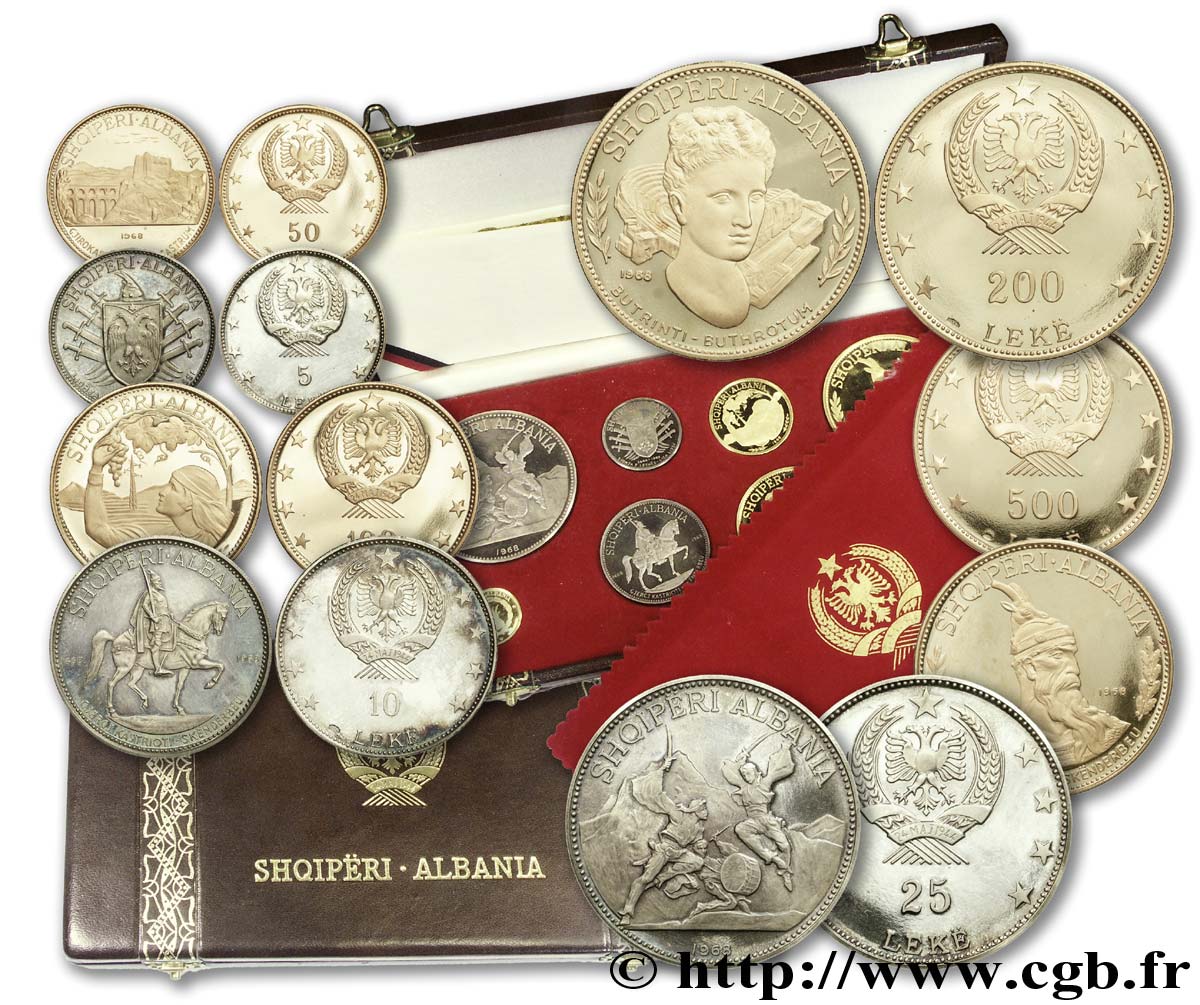v42_0985 - ALBANIA - REPUBLIC Série de cinq monnaies en or et de trois en argent 1968
MONNAIES 42 (2010)
Starting price : 5 500.00 €
Estimate : 9 000.00 €
Realised price : 5 500.00 €
Number of bids : 1
Maximum bid : 7 700.00 €
Starting price : 5 500.00 €
Estimate : 9 000.00 €
Realised price : 5 500.00 €
Number of bids : 1
Maximum bid : 7 700.00 €
Type : Série de cinq monnaies en or et de trois en argent
Date: 1968
Quantity minted : 12.000
Metal : gold-silver
Edge : cannelée
Rarity : R3
Coments on the condition:
Des hairlines dans les champs, et des traces de manipulation. Les monnaies conservent la totalité de leur brillant d’origine
Predigree :
Ce coffret provient de MONNAIES 35 n° 883
Obverse
Reverse
Commentary
Or (titre de 900/1000) : 500 lekë (55,18 mm ; 98,75 gr), 200 lekë (45,11 mm ; 39,85 gr), 100 lekë (32,04 mm ; 19,63 gr), 50 lekë (25,97 mm ; 9,85 gr), 20 lekë (20,87 mm ; 4,06 gr)
Argent (titre de 1000/1000) : 25 lekë (60,14 mm ; 84,01 gr), 10 lekë (39,91 mm ; 33,31 gr), 5 lekë (30,32 mm ; 16,98 gr)
Les monnaies sont contenues dans un magnifique coffret marron accompagné de leur certificat d’authenticité portant le n° 589.
Argent (titre de 1000/1000) : 25 lekë (60,14 mm ; 84,01 gr), 10 lekë (39,91 mm ; 33,31 gr), 5 lekë (30,32 mm ; 16,98 gr)
Les monnaies sont contenues dans un magnifique coffret marron accompagné de leur certificat d’authenticité portant le n° 589.








 Report a mistake
Report a mistake Print the page
Print the page Share my selection
Share my selection Ask a question
Ask a question Consign / sell
Consign / sell